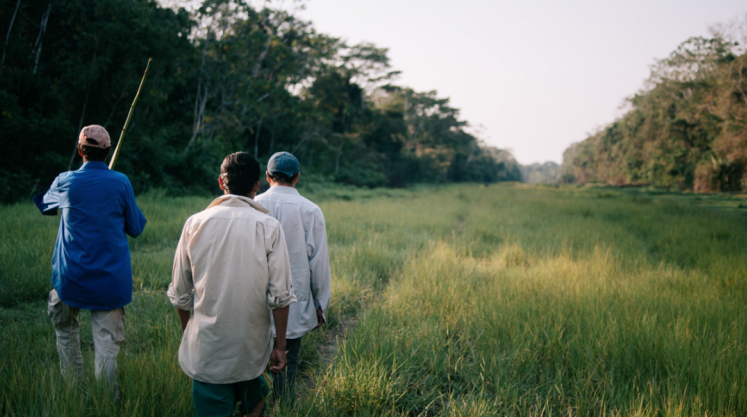"How long is the track?" asks Casimiro Canchi Tamo, a member of the Chimane community.
"About 700 meters," answers Santos Canchi, his cousin, while walking through a vast, deforested space in the middle of the forest, a bit over half an hour from Maraca'tunsi, one of the Tsimané communities in San Ignacio de Moxos, Beni.
"Planes arrived every once in a while?"
"Once a month, it brought goods."
"Until what year did they come?"
"Until 2010," explains Santos, who is mayor of Maraca'tunsi. The planes belonged to a sawmill owned by San Ambrosio, a company that arrived in the 1990s to exploit forest resources and sought to make the transport of food, personnel, and supplies easier with a landing strip in the middle of Bolivia's Amazon.
To read the full story in Spanish, visit the Agencia de Noticias Fides website.
—¿Cuánto mide la pista? —pregunta Casimiro Canchi Tamo, comunario chiman.
—Unos 700 metros de largo, —contesta Santos Canchi, su primo, mientras camina por medio de un gran espacio deforestado en medio del bosque, a poco más de media hora de Maraca’tunsi, una comunidad Tsimané de San Ignacio de Moxos, Beni.
—¿Cada cuánto llegaban las avionetas? —pregunto.
—Una por mes, traía sus víveres, —contesta Santos.
—¿Hasta qué año venían?
—2010.
Explica Santos, el corregidor de Maraca’tunsi, sobre las avionetas del aserradero San Ambrosio, que llegó en la década de 1990 a explotar la riqueza forestal del lugar y para hacer más fácil el traslado de alimentos, personal e insumos habilitó una pista de aterrizaje cerca a la maderera que erigió en medio de la Amazonía beniana.
